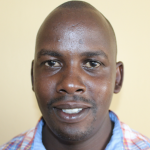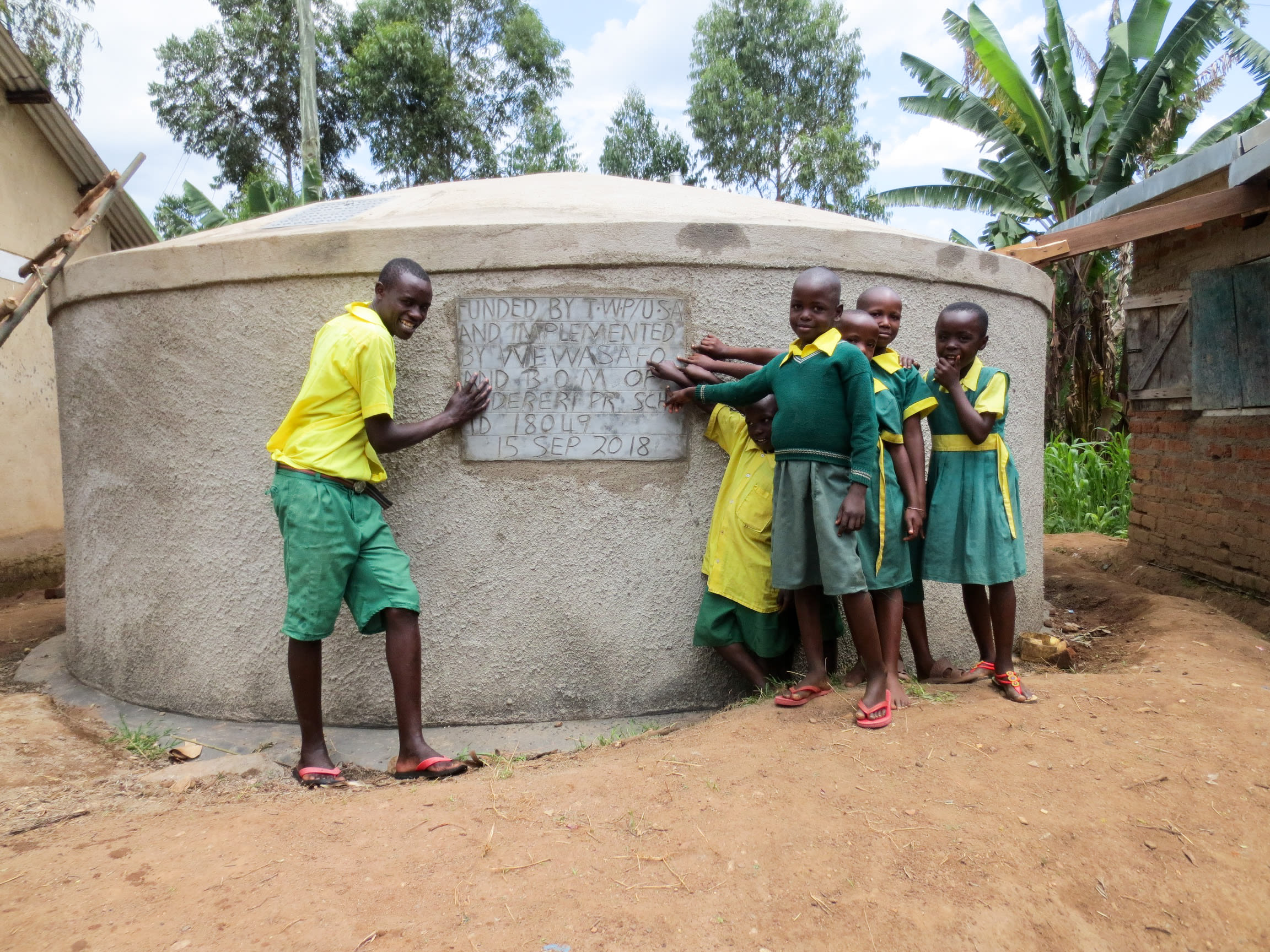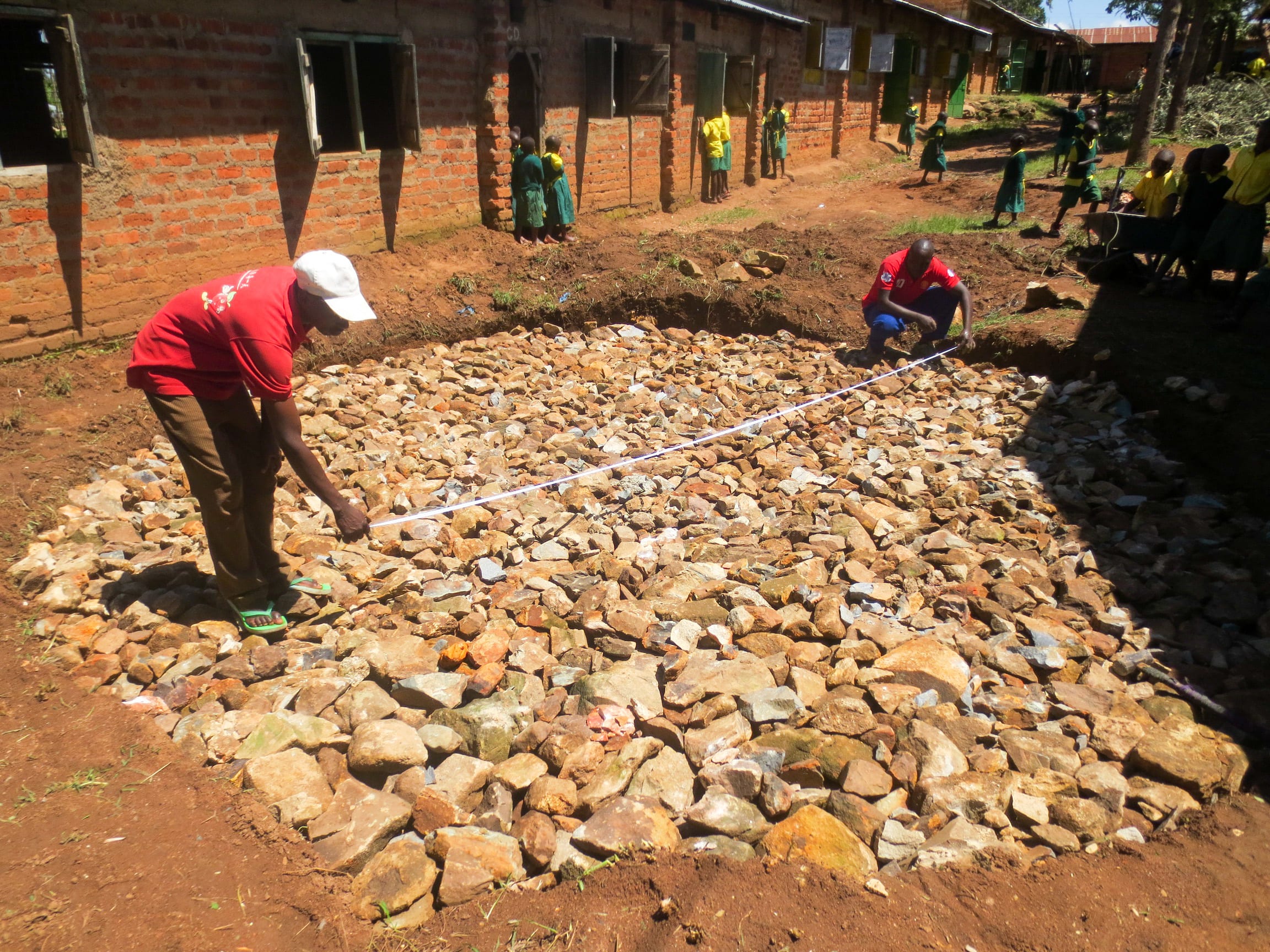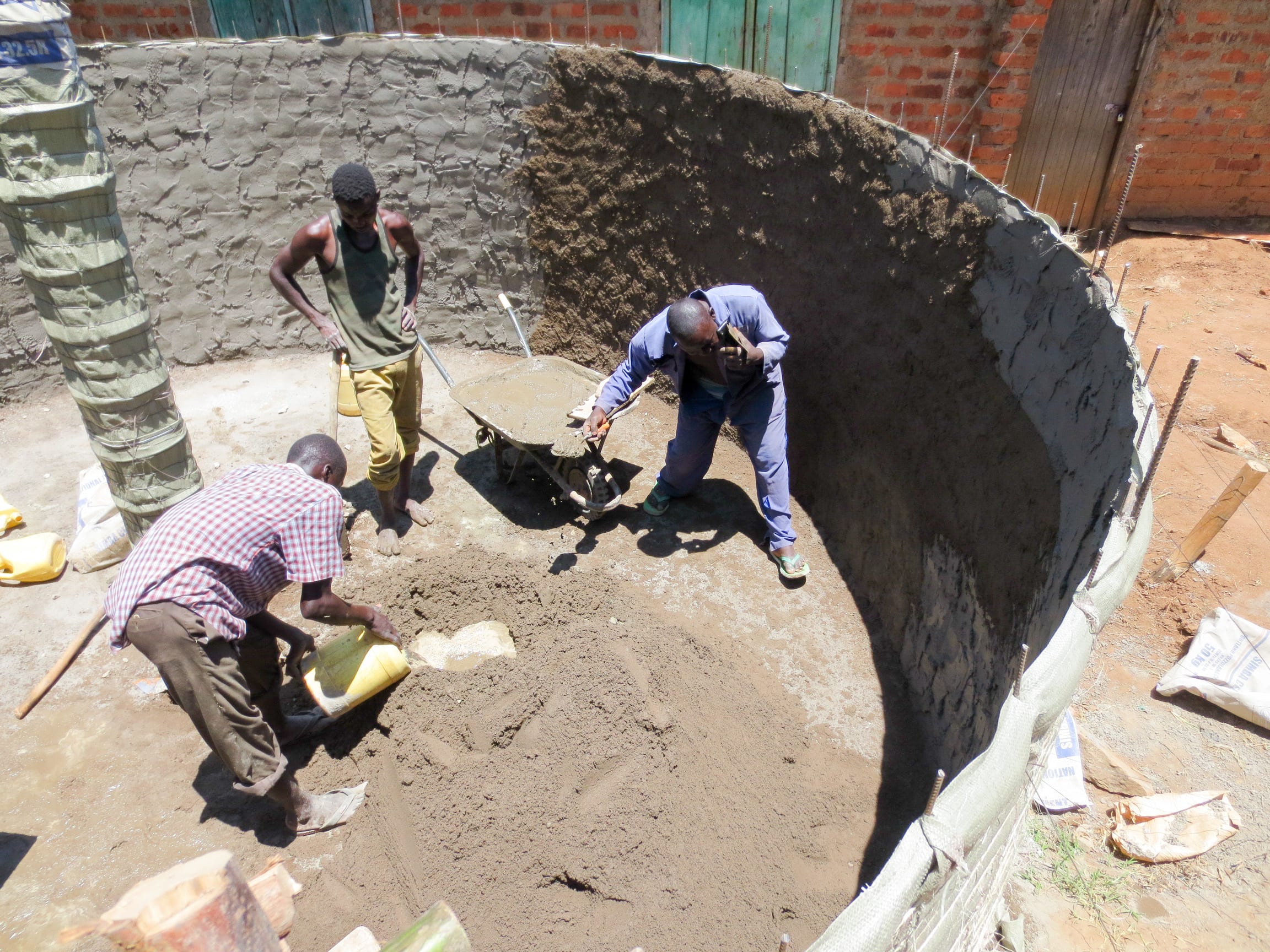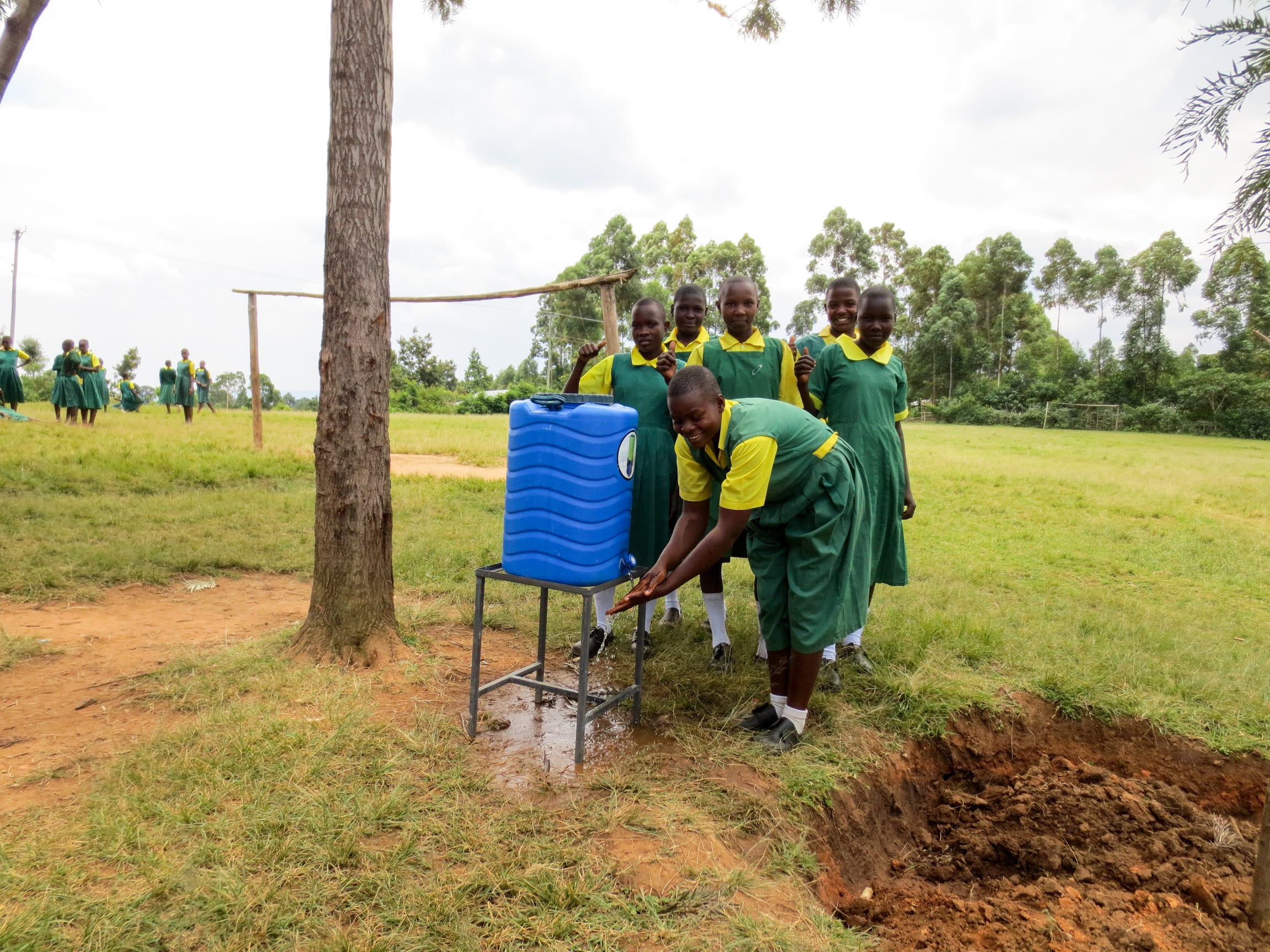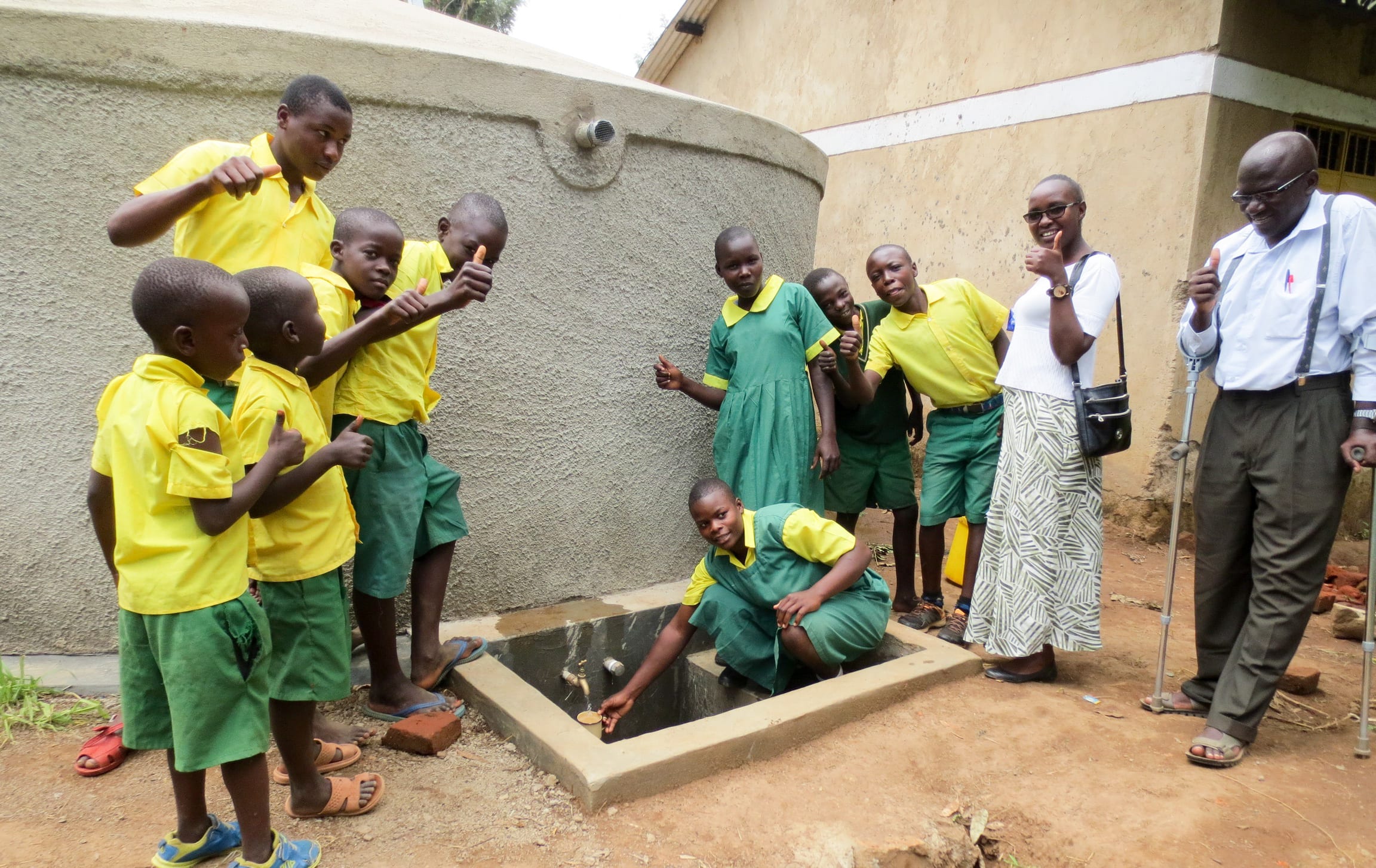Jidereri Primary School was started by the community in 2006 as nursery school. The local government took over in 2008, adding grades one and three. After ten more years of development, the school has a total population of 395 students. There are 14 teachers and two support staff who help the day to day activities run smoothly.
Water
The school does not have a water source. Instead, pupils must leave to fetch water from a protected spring that is two kilometers away! This is the closest clean water source, but it's hard to believe that the water is still clean after it makes the long dusty journey back in open containers.
Students are also having to sacrifice precious study time to find this water. During our initial visit to the school, we managed to travel to the current water source and found that the two kilometer's walk to fetch water is tiresome - not to mention the grueling return trip with the heavy water that was gathered.
Sanitation
Most of the pit latrines students use are made of brick and iron. However, they're getting very old and the pits are almost full. Students are using these despite the horrendous smell and poor conditions - they are rarely cleaned, since that would mean more water needs to be gathered. It's the same with the hand-washing bucket they have; if students were to wash their hands throughout the day, they'd need to make extra trips for water. Headteacher Mulira Musonere said, "Due to the poor hygiene in the school, some students have been infected with jiggers. Currently, we have 15 students who are absent because they cannot walk to school and are embarrassed due to the jiggers stigma. The teachers sometimes get sick too, from drinking contaminated water which students carry from home."
Here's what we're going to do about it:
Training
Training will be held for two days. The facilitator will use PHAST (participatory hygiene and sanitation transformation), ABCD (asset-based community development), CTC (child to child), lectures, group discussions, and handouts to teach health topics and ways to promote good practices within the school. The CTC method will prepare students to lead other students into healthy habits, as well as kickstart a CTC club for the school.
Hand-Washing Stations
This CTC club will oversee the new facilities, such as hand-washing stations, and make sure they are kept clean and in working condition. The two hand-washing stations will be delivered to the school, and the club will fill them with water on a daily basis and make sure there is always a cleaning agent such as soap or ash.
VIP Latrines
Two triple-door latrines will be constructed with local materials that the school will help gather. And with a new source of water on school grounds, students and staff should have enough to keep these new latrines clean.
Rainwater Catchment Tank
A 50,000-liter rainwater catchment tank will help alleviate the water crisis at this school. The school will also help gather the needed materials such as sand, rocks, and water from the spring for mixing cement. Once finished, this tank can begin catching rainfall that will be used by the school’s students and staff.
We and the school strongly believe that with this assistance, standards will significantly improve. These higher standards will translate to better academic performance!
This project is a part of our shared program with Western Water And Sanitation Forum (WEWASAFO). Our team is pleased to provide the reports for this project (formatted and edited for readability) thanks to the hard work of our friends in Kenya.

 Rainwater Catchment
Rainwater Catchment
 Rehabilitation Project
Rehabilitation Project













